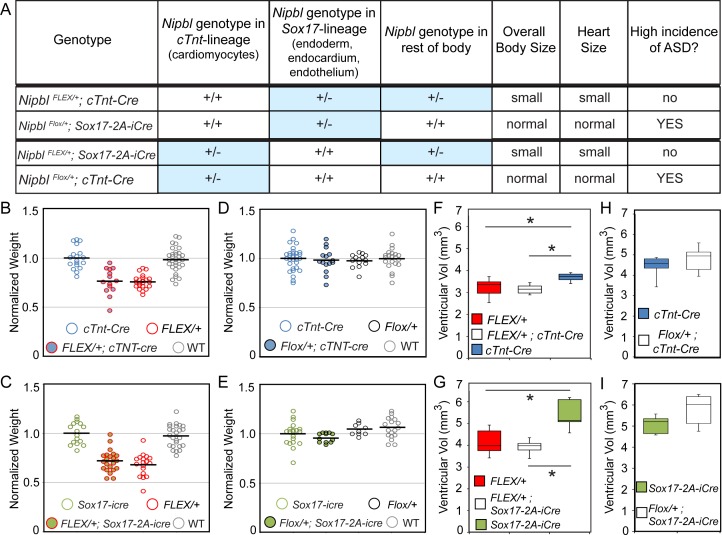Fig 7. Relationships between Nipbl genotype, embryo size, heart size, and ASDs.
A. Table summarizing genotypes, heart size, body size and incidence of ASDs in different crosses. B. Rescued NipblFLEX/+;cTnt-Cre embryos (n = 14) resembled their NipblFLEX/+ littermates (n = 22) in body size and were smaller than control littermates (cTnt-Cre n = 18, wildtype n = 31). C. Similar results were observed in rescued NipblFLEX/+;Sox17-2A-iCre embryos (n = 22; Sox17-2A-iCre n = 16; NipblFLEX/+ n = 18; wildtype n = 25). D. NipblFlox/+;cTnt-Cre (n = 15) were similar in overall body size to littermate controls (NipblFlox/+ n = 14, cTnt-Cre n = 30, wildtype n = 21). E. Similar results were observed in NipblFlox/+;Sox17-2A-iCre (n = 13) when compared to littermate controls (Sox17-2A-iCre, n = 20; NipblFlox/+ n = 10; wildtype n = 19). Note that individual weights for each cross in B–E were normalized to the mean weight of cTnt-Cre controls (B, D), or Sox17-2A-iCre controls (C, E); black bars indicate normalized mean weight for each genotype. F. Ventricular volume analyses (graphed as box plots) show that the overall heart size of rescued NipblFLEX/+;cTnt-Cre embryos (n = 7) were similar in size to NipblFLEX/+ heart size (n = 9) (Mann-Whitney U, p > 0.05). Control hearts (cTnt-Cre, n = 6) were significantly larger than the hearts of their NipblFLEX/+ and NipblFLEX/+;cTnt-Cre littermates (asterisks: Mann-Whitney U, p < 0.05). G. Rescued NipblFLEX/+;Sox17-2A-iCre embryo hearts (n = 5) were also similar in size to NipblFLEX/+ littermate heart size (n = 6) (Mann-Whitney U, p > 0.05) and significantly smaller than control hearts (Sox17-2A-iCre, n = 5) (asterisk: Mann-Whitney U, p < 0.05). H. Ventricular volume analysis show that the ventricle size of NipblFlox/+;cTnt-Cre embryos (n = 9), which display a high frequency of heart defects, were similar in size to control hearts (cTnt-Cre, n = 9) (Mann-Whitney U, p > 0.05). I. NipblFlox/+;Sox17-2A-iCre mutant hearts (n = 5), which also display a high frequency of heart defects, were also similar in size to control hearts (Sox17-2A-iCre, n = 5) (Mann-Whitney U, p > 0.05).

